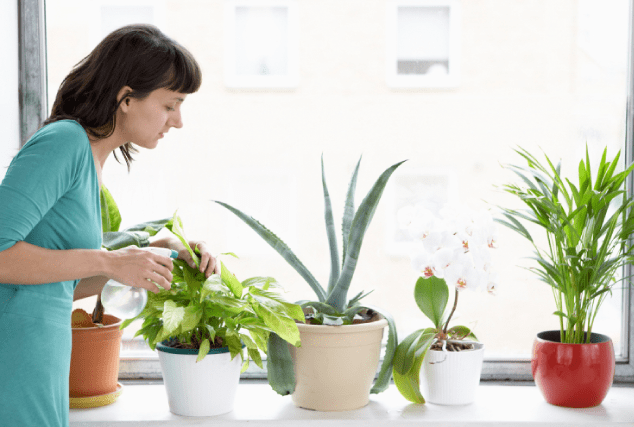Plants are amazing things. Not only can they provide us with delicious food, they’re pretty to look at too. I dare you to gaze at a patch of wildflowers and feel angry.
Basic biology class filled us in on the life-serving purpose of plants. We exhale carbon dioxide, which they turn back into oxygen for us to inhale. Thank you, plants. We’d be sunk without you. But what plants do for us isn’t limited to the air we breathe when we step beyond our front door.
Given the nature of their mission, it’s no surprise that NASA has done all kinds of research on indoor air quality. Astronauts are completely enclosed for extended periods of time during their expeditions, and they need good-quality air to survive. Plants are an integral part of the equation. But don’t worry—you don’t have to go through astronaut training to take advantage of NASA’s research.
As Dr. B.C. Wolverton points out in How to Grow Fresh Air: 50 Houseplants that Purify Your Home and Office, when we scatter plants throughout our homes and workspaces, they serve a higher purpose by acting as nature’s own air purification system. And we don’t even have to remember to change their filter. Awesome!
Here’s how plants work for us, day in and day out:
- Plants add moisture to the air by emitting water vapor from their leaves
- Plant leaves absorb toxins such as benzene, formaldehyde, and ammonia from the air.
- Plants keep us in touch with nature even when we spend time indoors—a pretty big deal if you think about it.
Poor air quality indoors can bring on allergies, fatigue, asthma, and headaches—and toxins are a big part of it. Where do indoor toxins come from?
- Energy efficiency: Sure, it helps with heating costs. But energy efficiency also decreases the flow of moving polluted air outside and replacing it with fresh air inside.
- Building materials, paints, household cleaners, carpeting, and more: A lot of our fabulous new things contribute to off-gassing, which releases all sorts of chemicals into the air we breathe.
- Our bodies: Besides the carbon dioxide we exhale, our basic bodily functions emit substances like carbon monoxide, methane, and phenols.
I think it goes without saying that we need good quality, healthy air—both inside and outside—in order for our health to thrive. Common houseplants can be a simple ally in this endeavor. Some of the most effective and easy-to-grow indoor plants include:
- Areca, Lady, Bamboo, and Dwarf Date Palms
- Rubber Plant
- Boston and Kimberley Queen Ferns
- Ficus Alii
- Peace Lily
If you haven’t put much thought into what lurks in the air of your living room or cubicle, there’s no time like the present. Pick up a copy of Wolverton’s book, search online for houseplants that clean the air, or simply stop by your local plant nursery for suggestions. There couldn’t be a simpler—or more beautiful—way to clear the air that your family breathes every day.
Do you have a favorite houseplant? Tell us what you love about it.
Photo from iStock/IPGGutenbergUKLtd



